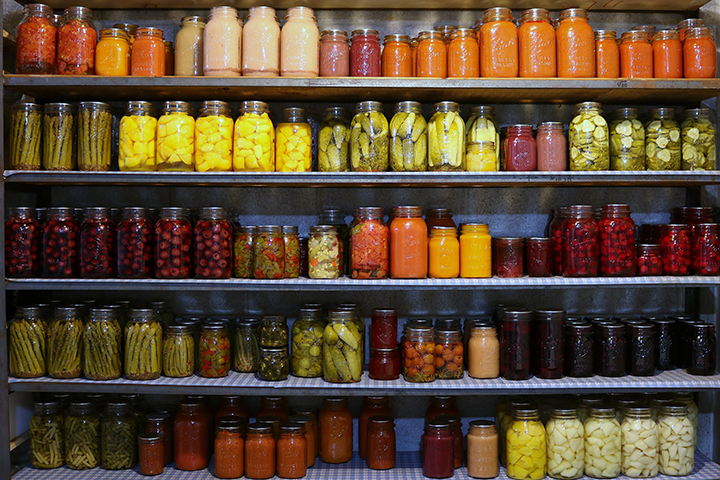Food Storage > Canning
Canning is a popular method of preserving food that has been used for centuries. It involves heating food to a high temperature and then sealing it in airtight containers, such as glass jars or metal cans. Canned food can last for several years, making it a convenient and cost-effective option for home food storage.

The process of canning involves several steps. First, the food is prepared by washing, peeling, and cutting it into appropriate sizes. The food is then heated to a high temperature, either by boiling or steam, to kill any bacteria or microorganisms that may be present. This step is essential to ensure that the food is safe to eat and will not spoil.
Next, the hot food is carefully ladled into clean jars or cans, leaving some headspace at the top to allow for expansion during processing. The jars or cans are then sealed with lids that have been sterilized to prevent contamination.
The sealed containers are then processed in a pressure canner or boiling water bath for a specific amount of time, depending on the type of food and altitude. This step helps to create a vacuum seal that prevents air and bacteria from entering the container, ensuring that the food remains fresh and safe to eat.
One of the main benefits of canning food at home is that it allows you to preserve seasonal produce for later use. This can be a cost-effective way to enjoy fresh fruits and vegetables throughout the year, even when they are out of season. Canning is also a great way to preserve homemade jams, jellies, and pickles, as well as meats and soups.
Canned food is also convenient for meal planning and emergency preparedness. Having a supply of canned food on hand can help ensure that you always have nutritious food available, even during emergencies or power outages.
However, there are some considerations to keep in mind when canning food at home. It is important to follow proper food safety guidelines, such as using clean equipment and processing the food at the correct temperature and time. Failure to follow these guidelines can lead to the growth of harmful bacteria and foodborne illness.
It is also important to note that not all foods are suitable for canning. Some foods, such as dairy products and low-acid vegetables like green beans, require special processing methods to ensure their safety. It is important to research the specific requirements for the foods you plan to can and follow a trusted recipe.
In conclusion, canning is a popular method of preserving food for home food storage. It is a cost-effective and convenient way to enjoy fresh produce year-round and ensure that you always have nutritious food available. However, it is important to follow proper food safety guidelines and research the specific requirements for the foods you plan to can. With proper care and attention, canning can be a safe and rewarding way to preserve food for your family’s needs.